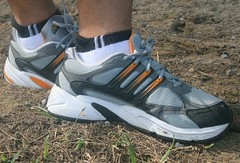THE ROLE OF THE SKIN IN PREVENTING OVERHEATING
Overheating occurs when too much heat is being produced by the body so the idea here is to remove the excess heat. This then prevent the body temperature to rise above normal. The following are the mechanisms involved in preventing overheating (all occurs within the skin itself):- The arterioles in the skin vaso-dilate (get wider). As a result of this more blood is directed or transported to the blood capillaries near to the surface of the skin. By this, heat is brought near to the surface of the skin.
- The sweat glands make more sweat. The sweat is then deposited through the sweat pore to the surface of the skin. The heat from the blood is used to evaporate the sweat and at the same time when the sweat evaporates, heat is also removed at the same time.
- The hair erector muscles relax and as a result the body hairs lie flat against the skin allowing air current to get nearer to the skin. As a result more heat will be removed.
(Apart from what happens in the skin the following also occur in order to remove more heat from the body)
- Cellular metabolism in the cells slows down so less heat is produced.
- Breathing rate increases so more heat is removed with the expired air.
THE ROLE OF THE SKIN IN PREVENTING OVERCOOLING
Overcooling occurs when not enough heat is being produced by the body. Therefore the body tries to conserve heat as much as possible so as to prevent the body temperature to drop below normal. The following mechanisms are very important in preventing overcooling:
- The arterioles in the skin vaso-constrict (becomes narrower) and as a result less blood is transported or directed to the blood capillaries. This prevent heat being removed.
- Sweat productions stops or no sweating occurs. Therefore no heat removed.
- The hair erector muscles contract raising the body hairs. This prevents air current from getting near the skin surface when air is trapped in between the hairs (Note: still air is a bad conductor of heat). This prevents heat from being removed.
(Apart from the skin, the following are also involved in conserving the heat available in the body as well as in preventing heat loss)
- Cellular metabolism increases, producing more heat for the blood to distribute around the body.
- The skeletal muscles start contracting regularly which causes shivering. Shivering generates heat.
HYPERTHERMIA AND HYPOTHERMIA
- Hypothermia is a condition where the body temperature falls below normal because too little heat is being generated.
- Hyperthermia is a condition which occurs when the body is unable to shed enough heat to stop the temperature from rising.
